43 Exciting Portuguese Seafood Dishes to Taste & Explore
Portuguese seafood captivates culinary enthusiasts with its rich maritime heritage and vibrant flavors.
Ocean-fresh ingredients define the region's most beloved culinary traditions.
Coastal communities have perfected seafood preparation techniques through generations of skilled cooking.
Mediterranean influences blend seamlessly with unique local techniques, creating remarkable dishes that tantalize taste buds.
Regional spices and cooking methods transform simple marine ingredients into extraordinary gastronomic experiences.
Fishing communities along Portugal's extensive coastline contribute deeply to this remarkable culinary landscape.
Passionate chefs continue innovating while honoring traditional seafood preparation techniques passed down through centuries.
You will find incredible depth and complexity in these 43 great Portuguese seafood dishes:
Portuguese Seafood Dishes Worth Sharing
Salty breezes and coastal markets provide inspiration for Portugal’s most famous seafood recipes. Plates piled high are made for gatherings of friends and family.
Ameijoas A Bulhao Pato
Bulhão Pato clams burst with Portuguese coastal flavor, featuring succulent shellfish swimming in a zesty sauce crafted from olive oil, garlic, and fresh cilantro.
Portuguese restaurants across Lisbon and coastal regions celebrate this signature seafood dish named after 19th-century poet Raimundo Antonio de Bulhão Pato.
Chefs typically enhance the sauce with white wine and bright lemon juice for extra depth.
Fresh clams create the foundation of this simple yet remarkable appetizer.
Mediterranean ingredients blend seamlessly in this classic preparation.
Restaurants serve the dish with crusty bread for soaking up the fragrant sauce.
Each bite delivers an explosion of oceanic and herbal notes.
Diners relish the straightforward yet sophisticated Portuguese culinary tradition through this iconic clam recipe.
Polvo A Lagareiro
Polvo à Lagareiro is a quintessential Portuguese seafood specialty featuring tender octopus grilled and lavishly dressed with extra virgin olive oil.
Portuguese fishermen pioneered this method of preparing octopus by first boiling it until perfectly soft, then cutting it into pieces and charring over high heat.
Olive oil transforms the grilled octopus, creating a rich, aromatic coating that highlights the meat's natural flavors.
Garlic, fresh coriander, tangy lemon juice, and sea salt enhance the dish's complex taste profile.
Small roasted potatoes with crispy skins traditionally accompany the octopus, adding textural contrast and earthy notes.
Mediterranean cooking techniques shine through this simple yet sophisticated preparation method.
Regional olive oil production plays a crucial role in defining the dish's character.
Generations of Portuguese coastal communities have perfected this elegant seafood recipe, making it a beloved national treasure.
Cataplana
Cataplana are traditional Portuguese seafood dishes cooked in a unique copper clam-shaped pan that originated among fishermen in Faro's coastal regions.
Seafood variations reign supreme, featuring fresh marine ingredients like shrimp, clams, and fish simmered with aromatic herbs and spices.
Regional culinary experts craft multiple versions incorporating regional ingredients ranging from meats to vegetables and rice.
Portuguese families treasure this one-pot meal as a centerpiece of community gatherings and seaside celebrations.
Portuguese fishermen initially developed the technique to quickly prepare meals during maritime expeditions.
Maritime traditions and cooking methods contribute to the dish's rich cultural significance.
Mediterranean cooking influences shine through in its complex yet simple preparation techniques.
Bacalhau Com Natas
Bacalhau com natas embodies Portugal's love for salted cod, transforming the preserved fish into a creamy, comforting casserole baked with golden potatoes and rich sauce.
Portuguese families cherish this traditional Christmas dish, serving it in numerous regional variations with subtle ingredient tweaks.
Restaurants across Portugal feature this classic recipe, which typically includes boiled salt cod layered with crispy potato cubes.
Onions and white wine frequently enhance the flavor profile of this beloved national specialty.
Bechamel sauce sometimes replaces cream, adding complexity to the base.
Cheese and various spices contribute additional depth to the complex preparation.
Multiple ingredients blend seamlessly in this iconic Portuguese comfort food.
Southern regions particularly embrace this hearty cod-based meal as a cherished culinary tradition.
Arroz De Marisco
Arroz de marisco dominates Portuguese seafood cuisine as a soupy rice dish brimming with ocean treasures like prawns, mussels, squid, and clams.
Portuguese coastal regions pioneered this wet rice specialty that differs from Spanish paella through its soupier consistency.
Fishermen originally crafted the recipe using freshest maritime catches available in their local waters.
White wine and fresh herbs enhance the seafood's natural flavors, creating a complex taste profile.
Tomatoes and peas often accompany the seafood, adding color and additional nutrients to the meal.
Leira potentially represents the dish's original birthplace, though its exact origins remain somewhat unclear.
Bacalhau A Bras
Bacalhau a bras exemplifies Portugal's seafood mastery, blending shredded salt cod with crispy potato strips, onions, and eggs into a rustic, flavor-packed comfort meal.
Portuguese kitchens transform simple ingredients into this iconic national dish that originated in Lisbon's Bairro Alto neighborhood.
Mediterranean olives add tangy depth to the savory mixture, providing unexpected complexity.
Skillfully prepared salt cod serves as the protein foundation of this traditional recipe.
Golden-brown potato strips create irresistible texture throughout the dish.
Scrambled eggs bind the ingredients, adding richness and smoothness.
Fresh parsley garnishes the plate, offering a bright, herbal finish.
Hot serving temperature ensures maximum enjoyment of this classic Portuguese specialty.
Choco Frito
Choco frito represents a quintessential Portuguese seafood delicacy from Setubal, featuring crispy fried cuttlefish despite its name suggesting chocolate.
Fishermen traditionally prepare this dish by boiling cuttlefish with garlic and bay leaves, then marinating it in lemon juice and wine.
Seasoned cornflour creates a crunchy exterior that perfectly encases the tender seafood meat.
Restaurants typically serve choco frito alongside golden potato chips, fresh salad, and lemon wedges for added zest.
Portuguese coastal communities consider this dish a staple seafood recipe that celebrates their maritime culinary traditions.
Crispy texture and bold flavors make choco frito an irresistible street food favorite.
Restaurant patrons often enjoy this dish as a casual lunch or dinner option.
Visitors to Setubal frequently seek out this iconic regional specialty to experience authentic Portuguese cuisine.
Filetes De Polvo
Filetes de polvo are crispy Portuguese seafood medallions featuring tender octopus tentacles transformed into golden-brown delicacies through a meticulous preparation process.
Portuguese coastal regions pioneered this classic recipe where octopus gets boiled until perfectly soft and succulent.
Skilled fishermen traditionally prepare these morsels by dipping octopus pieces into beaten eggs and coating them with fine breadcrumbs.
Each tentacle receives careful treatment before deep frying to achieve a beautiful crunchy exterior with a moist interior.
Mediterranean culinary techniques influence this dish's preparation method, ensuring maximum flavor retention.
Lemon juice and black pepper provide additional seasoning that enhances the octopus's natural maritime taste.
Restaurant menus across Portugal frequently showcase these filetes as a signature appetizer or main course.
Diners enjoy these crispy octopus fillets typically accompanied by white rice or fresh salad, creating a balanced and satisfying meal.
Bacalhau A Lagareiro
Bacalhau à Brás spotlights Portugal's ingenious salt cod cuisine, transforming humble ingredients into a rustic culinary masterpiece.
Originating in Lisbon's traditional kitchens, this beloved dish combines shredded salt cod with crispy straw potatoes, scrambled eggs, and caramelized onions.
Olive oil binds the ingredients, creating a savory texture that balances saltiness and richness.
Thin potato strips provide a satisfying crunch against the soft egg and tender fish.
Garnished with black olives and fresh parsley, the recipe reflects Portuguese resourcefulness in transforming preserved seafood.
Small details like perfectly seasoned eggs and crisp potato strands distinguish an exceptional bacalhau à brás from an ordinary rendition.
Bacalhau Com Broa
Bacalhau à Broa represents a masterful Portuguese seafood preparation featuring salt cod fillets slowly cooked in milk and crowned with a rustic cornmeal crumb topping.
Portuguese cooks carefully layer the fish with a crumbly mixture of broa bread, garlic, parsley, egg yolks, and olive oil that creates a golden crisp crust during baking.
Sautéed onions add depth to the dish's complex flavor profile.
Olives and an extra drizzle of olive oil enhance the final presentation.
Traditionally served with potatoes, this classic recipe pairs beautifully with Portuguese red wine.
Milk helps tenderize the salt cod, ensuring a moist and succulent texture.
Each bite delivers a perfect balance of crispy exterior and tender fish meat.
Bacalhau
Bacalhau represents Portugal's national seafood treasure, transforming dried and salted cod into an extraordinary culinary tradition that spans hundreds of regional recipes across generations.
Portuguese sailors historically preserved cod through salting techniques, enabling long maritime voyages and creating a versatile ingredient that became central to national cuisine.
Fishermen developed complex preparation methods involving soaking the fish in water to reduce saltiness before cooking through multiple techniques like grilling, frying, and braising.
Maritime exploration introduced this protein-rich ingredient to Portuguese kitchens, making it a staple during significant cultural moments like Christmas Eve and religious celebrations.
Portuguese regions developed unique bacalhau interpretations, ranging from simple home-style dishes to elaborate restaurant preparations.
Nordic cod catching practices initially supplied this essential ingredient, with Portuguese merchants perfecting preservation methods that revolutionized seafood storage.
European trade routes facilitated widespread cod distribution, transforming a practical preservation technique into a celebrated culinary tradition.
Grilled Sardines (Sardinhas Assadas)
Grilled sardines deliver a pure Mediterranean seafood experience highlighting fresh fish's natural oceanic essence, traditionally prepared along coastal regions of Portugal, Spain, and Greece during summer months.
Mediterranean fishermen grill these small, silvery fish directly over hot charcoal, imparting a smoky flavor that complements their delicate meat.
Simple marinades of olive oil, lemon juice, salt, and black pepper enhance sardines' inherent taste without overwhelming their subtle character.
Fishermen carefully select young, fresh sardines with firm flesh and bright scales as the primary ingredient for this classic dish.
Grilling temperatures around 400-450°F ensure crispy skin and tender, flaky interior.
Sardines cook quickly, usually requiring just 2-3 minutes per side to reach optimal doneness.
Arroz De Polvo
Arroz de polvo embodies Portugal's coastal culinary heritage, blending tender octopus with perfectly cooked rice in a luscious tomato-based sauce.
Portuguese fishermen traditionally crafted this one-pot meal using freshly caught octopus from Atlantic waters.
Onions and garlic form the aromatic foundation, creating deep flavor layers that complement the seafood's natural sweetness.
Malandrinho preparation ensures a slightly soupy consistency, distinguishing this dish from drier rice preparations.
Olive oil and regional spices enhance the octopus's delicate texture and marine essence.
Mediterranean ingredients like parsley frequently garnish the dish, adding fresh brightness.
Acorda De Marisco
Acorda à Alentejana is a rustic Portuguese seafood dish originating from Alentejo that transforms simple bread into a flavorful, hearty meal.
Fishermen and coastal communities traditionally prepared this unique recipe by soaking crusty bread with olive oil, garlic, and herbs.
Sautéed onions and cilantro provide an aromatic base for the bread mixture, which gets topped with fresh shellfish like shrimp, cockles, or clams.
Salt, pepper, and regional spices enhance the dish's robust flavors.
Fishermen would use available ingredients to create a satisfying meal after long days at sea.
Portuguese families often enjoy this dish as a quick, nourishing meal that showcases the simplicity of traditional cooking.
Each bite connects you to the rich culinary heritage of Portugal's coastal regions.
Portuguese Octopus Salad (Salada De Polvo)
Salada de polvo represents a Brazilian seafood delicacy where tender octopus takes center stage in a refreshing Mediterranean-inspired salad.
Brazilian coastal regions celebrate this dish with fresh octopus boiled until perfectly soft and chopped into bite-sized pieces.
Crisp onions, green bell peppers, garlic, and fresh coriander blend seamlessly with the octopus, creating a vibrant flavor profile.
Extra virgin olive oil and vinegar provide a classic dressing that enhances the seafood's natural taste.
Lime or lemon juice adds a bright citrus note that complements the octopus.
Salt and pepper season the salad, balancing its complex flavors.
Served chilled, this light and zesty dish captures Brazil's rich maritime culinary traditions.
Caldeirada
Caldeirada brings Portuguese coastal fishing traditions together in a robust seafood stew combining multiple fish varieties, shellfish, and occasional squid or octopus.
Fishermen originally crafted this hearty dish using their daily catch, creating a flavorful one-pot meal that maximizes ocean bounty.
Potatoes, onions, tomatoes, and green peppers form the stew's aromatic base, providing rich undertones to the seafood.
Olive oil, white wine, and fresh herbs like parsley enhance the complex flavor profile.
Garlic and paprika add depth and warmth to the dish, complementing the delicate seafood textures.
Mediterranean influences shine through the simple yet sophisticated preparation method.
Pataniscas
Pataniscas are golden Portuguese fritters packed with flavor from salted cod, expertly crafted through a crispy deep-frying technique that transforms simple ingredients into a beloved street snack.
Portuguese fishermen originally created these fritters as an economical way to use preserved bacalhau, blending flaked cod with a light flour-based batter enriched by chopped onions and garlic.
Skilled cooks carefully mix the ingredients to ensure a light, airy texture when fried.
Each patanisca delivers a perfect balance between crisp exterior and tender interior.
Generations have enjoyed these fritters as popular appetizers or casual meal companions.
Arroz De Tamboril
Arroz de tamboril represents a classic Portuguese seafood rice dish brimming with robust Mediterranean flavors.
Monkfish dominates the recipe as its premium protein, creating a rich and complex marine-inspired meal.
Portuguese coastal regions cherish this one-pot wonder for its simple yet elegant preparation.
Fishermen traditionally crafted this hearty stew using freshly caught monkfish and seasonal vegetables.
White wine and fish stock infuse deep layers of oceanic taste into tender rice grains.
Fragrant herbs like bay leaves and parsley enhance the dish's aromatic profile.
Onions, garlic, bell peppers, and tomatoes contribute complementary vegetable notes.
Olive oil helps bind all ingredients into a harmonious and satisfying seafood experience.
Acorda De Bacalhau
Açorda à Alentejana is a classic Portuguese bread soup originating from Alentejo that transforms simple ingredients into a rustic, comforting meal.
Stale bread serves as the soup's foundation, soaked in a rich, garlicky broth made with olive oil and fresh herbs.
Salted cod provides protein and depth, often mashed and blended directly into the soup's creamy texture.
Garlic plays a crucial role in developing the soup's intense flavor profile.
Fresh herbs like cilantro add brightness and complexity to the dish.
Poached eggs frequently crown the soup, creating a silky, luxurious finish.
Portuguese home cooks traditionally prepare this dish as a resourceful way to use leftover bread.
Mediterranean culinary techniques shine through in this humble yet sophisticated soup that exemplifies Alentejo's traditional cooking style.
Acorda De Camarao
Acorda de camarao is a Portuguese coastal delicacy featuring shredded bread transformed into a luxurious seafood porridge with intense maritime flavors.
Coastal Portuguese regions developed this rustic dish as a clever way to repurpose stale bread into a protein-rich meal.
Fishermen originally crafted the recipe using fresh shrimp caught during their daily ocean expeditions.
Bread cubes absorb a rich broth made from sautéed onions and succulent shrimp, creating a creamy texture.
Eggs provide additional thickness and richness to the mixture.
Generous amounts of fresh cilantro add bright, herbal notes that complement the seafood's natural sweetness.
Olive oil enhances the dish's smooth consistency and provides a classic Mediterranean touch.
Served hot, this comfort food reflects Portugal's deep connection to ocean harvests and resourceful cooking traditions.
Croquetes De Camarao
Croquetes de camarao are savory Portuguese seafood delicacies featuring crispy golden exteriors and succulent shrimp interiors.
Originating from coastal regions of Portugal, these bite-sized appetizers blend fresh shrimp with a smooth béchamel sauce made from flour, butter, and milk.
Expertly seasoned with herbs and spices, the mixture creates a rich filling that captures the essence of maritime cuisine.
Carefully shaped into cylindrical forms, the croquettes are coated in breadcrumbs and deep-fried until achieving a perfectly crunchy texture.
Served hot as appetizers or snacks, these croquettes are popular in restaurants and home kitchens across Portugal.
Families often share these treats during gatherings, celebrating traditional culinary techniques.
Restaurants typically pair them with tangy dipping sauces that complement the shrimp's delicate taste.
Bacalhau A Algarvia
Bolinhos de bacalhau are crispy Portuguese seafood fritters originating from Algarve's coastal regions, combining salted cod with potatoes in a delightful culinary tradition.
Fishermen developed these golden-brown patties as a practical way to preserve and consume cod during long sea voyages.
Skilled cooks carefully soak the dried cod to remove excess salt before mixing it with mashed potatoes, eggs, and parsley.
Carefully shaped and deep-fried, these compact fritters emerge with a crunchy exterior and tender, flavorful interior.
Portuguese families often serve bolinhos as appetizers during celebrations or casual gatherings.
Traditionally accompanied by a fresh green salad or tangy sauce, these snacks showcase Portugal's rich maritime cooking heritage.
Bacalhau A Gomes De Sa
Bacalhau a Gomes de Sa represents a quintessential Portuguese Christmas Eve delicacy featuring salt cod transformed into a mouthwatering casserole.
Portuguese families layer salt cod, sliced potatoes, and caramelized onions in a baking dish with careful precision.
Mediterranean flavors emerge as the ingredients bake together until golden and crispy.
Eggs sliced on top add creamy texture and visual appeal to the hearty seafood creation.
Chopped parsley and black olives provide a fresh, colorful garnish that complements the rich fish base.
Salt cod requires extensive preparation, involving soaking and desalting before cooking to achieve the perfect flavor balance.
Historical records suggest this dish originated in Porto during the late 19th century, named after a local restaurant owner who first popularized the combination.
Sopa De Cacao
Sopa de cacao represents a unique Mexican seafood broth blending dogfish shark with aromatic spices in a complex culinary experience.
Mexican coastal regions traditionally prepare this rich soup by slowly simmering shark meat in a fragrant garlic and coriander base.
Fishermen along the Gulf of Mexico frequently enjoy this hearty dish as a warming meal after long days at sea.
Bread slices often serve as a foundation for the broth, creating a substantial meal that absorbs the soup's deep flavors.
Ground paprika and bay leaves enhance the shark meat's natural taste with subtle warmth and depth.
Vinegar adds a tangy counterpoint to the broth's savory profile.
Flour occasionally helps thicken the soup, providing a more robust texture.
Coastal communities consider this recipe a treasured method of transforming fresh shark into a satisfying meal.
Arroz De Lingueirao
Arroz de lingueirao is a signature Portuguese seafood rice dish from Algarve featuring razor clams as its star ingredient.
Razor clams are briefly boiled until their shells naturally open, releasing a rich broth used to cook fragrant rice with onions and garlic.
Tomatoes and peppers add depth to the rice's flavor profile while maintaining a light, coastal essence.
Fishermen traditionally prepared this dish using freshly caught razor clams from local waters.
Coastal communities developed the recipe as a simple yet flavorful way to enjoy their marine harvest.
Fresh coriander provides a final aromatic touch to the completed dish.
Marine sustainability became a concern as the popularity of razor clam recipes increased regional clam populations.
Regional cooking techniques transformed this modest ingredient into a beloved regional specialty.
Espada Com Banana
Espada com banana are golden-fried black scabbardfish fillets paired with crispy banana halves, a signature seafood dish from Madeira Island, Portugal.
Portuguese fishermen traditionally prepare this unique recipe by carefully seasoning fresh espada with garlic, salt, and oregano.
Skilled cooks meticulously coat fish and banana slices in flour, eggs, and breadcrumbs before deep-frying them to a perfect golden-brown color.
Mediterranean culinary techniques shine through the crispy exterior and tender fish inside.
Restaurant menus across Madeira frequently feature this classic dish as a testament to the region's maritime cooking traditions.
Regional ingredients like fresh olive oil enhance the rich flavors of this seafood specialty.
Bananas add a subtle sweetness that complements the savory fish perfectly.
Diners enjoy this dish as a balanced and satisfying meal representing Madeiran coastal cuisine.
Arroz De Bacalhau
Arroz de bacalhau represents a savory Portuguese rice dish packed with rich maritime flavors from salted cod blended seamlessly with aromatic ingredients.
Portuguese coastal regions originally developed this classic recipe using preserved cod as a protein staple during times of limited fresh seafood availability.
Fishermen traditionally prepared this one-pot meal combining flaky salt cod with fragrant rice, sautéed onions, and garlic for a hearty meal.
White wine and vegetable stock enhance the seafood's natural saltiness, while tomatoes and peppers add depth and color to the mixture.
Some regional variations include red beans or leeks, creating subtle flavor differences across Portugal's diverse culinary landscape.
Professional restaurants often serve arroz de bacalhau as a main course or alongside grilled fish fillets.
Mediterranean cooking techniques shine through this simple yet sophisticated Portuguese comfort food that celebrates the country's deep connection to the ocean.
Meia-Desfeita
Bacalhau à Gomes de Sá is a classic Portuguese salt cod casserole originating in Porto that transforms humble ingredients into a deeply satisfying meal.
Portuguese sailors perfected this recipe as a resourceful way to use preserved cod, creating a rich seafood dish packed with flavor and cultural significance.
Mediterranean-style ingredients like chickpeas, potatoes, onions, and hard-boiled eggs blend seamlessly with the salted cod, giving the dish its distinctive character.
Olive oil and vinegar add brightness to the hearty mixture, while fresh parsley and paprika provide aromatic depth.
Traditionally served cold, the casserole can also be baked until golden and enjoyed warm.
Portuguese families have passed down this recipe through generations, celebrating their maritime heritage.
Salt cod's complex preparation involves soaking and desalting the fish before cooking, ensuring a tender and flavorful result.
Caldeirada De Enguias
Caldeirada de enguias exemplifies Portugal's coastal culinary mastery with its rich eel stew originating from Aveiro's maritime traditions.
Portuguese fishermen developed this hearty dish using freshly caught eels as the primary protein in a vibrant sauce.
Saffron provides a golden color and distinctive flavor that elevates the entire preparation.
Onions, potatoes, and bell peppers complement the tender eel meat, creating a balanced and aromatic one-pot meal.
Careful cooking requires medium heat and minimal stirring to preserve the ingredients' integrity.
Regional techniques ensure the potatoes become perfectly tender while maintaining the stew's authentic texture.
Generations of coastal families have refined this recipe, transforming simple ingredients into a memorable maritime experience.
Carapaus Alimados
Carapaus alimados are succulent Portuguese fish fillets meticulously prepared by dry-salting Atlantic horse mackerels and boiling them to tender perfection.
Originating from Algarve's coastal regions, this traditional seafood dish transforms simple ingredients into a flavorful Mediterranean delicacy.
Fishermen carefully salt whole mackerels before removing their skin and bones with precision.
Skilled artisans finish the dish by drizzling premium olive oil and fresh lemon juice over the pristine white fish.
Thin slices of raw onion or garlic often accompany the mackerel, adding sharp complexity to its mild flavor.
The term "alimados" specifically describes the intricate process of skinning and scaling the fish.
Coastal Portuguese communities have perfected this technique over generations, preserving their maritime culinary heritage.
Bacalhau A Ze Do Pipo
Bacalhau a Ze do Pipo represents a classic Portuguese comfort dish featuring salted cod transformed into a creamy, satisfying casserole.
Portuguese kitchens celebrate this recipe as a hearty meal blending rich maritime traditions with simple ingredients.
Salted cod gets boiled in milk until tender and flaky, creating a smooth base for the preparation.
Mashed potatoes provide a substantial layer of creaminess throughout the dish.
Generous amounts of mayonnaise add a tangy richness that complements the fish's natural saltiness.
Baked in an oven until golden brown, the casserole develops a crispy top layer that contrasts with its soft interior.
Colorful garnishes like olives and peppers add visual appeal and a burst of fresh flavor.
Feijoada De Lulas
Caldeirada de Lulas represents a robust Portuguese seafood stew brimming with oceanic flavors and rustic charm.
Succulent squid slices merge with creamy white beans and spicy chourico sausage in a rich, aromatic broth.
Tomatoes and carrots add depth and sweetness to the dish's complex profile.
White wine provides a subtle acidic balance that enhances the seafood's natural essence.
Traditional Portuguese kitchens simmer these ingredients slowly, allowing each component to develop intense flavors.
Seasonings like bay leaves and chili peppers contribute warmth and complexity to the stew.
Mediterranean cooking techniques ensure tender squid and perfectly blended ingredients.
Bacalhau Com Todos
Bacalhau com todos represents a festive Portuguese Christmas Eve feast featuring salt cod as its centerpiece.
Portuguese families gather around tables to savor this traditional meal combining boiled cod with an array of complementary ingredients.
Perfectly cooked cod anchors the dish alongside colorful vegetables like carrots, cabbage, and potatoes.
Hard-boiled egg slices add extra protein and texture to the robust plate.
Mediterranean influences shine through the simple yet flavorful combination of ingredients.
Regional Portuguese cooking techniques transform humble components into a memorable holiday experience.
Seasonal vegetables enhance the fish's rich flavor profile.
Each bite connects diners to generations of culinary heritage.
Ameijoas A Marinheira
Ameijoas a marinheira are succulent Portuguese seafood delicacies featuring fresh clams cooked in a rich, aromatic white wine sauce.
Sailors and coastal communities traditionally prepared this dish as a quick, flavorful meal using readily available ingredients.
Portuguese fishermen would gather fresh clams directly from the ocean, combining them with simple pantry staples like onions, garlic, and tomatoes.
Olive oil provides a smooth base for sautéing aromatics before adding white wine and lemon juice to create a vibrant broth.
Breadcrumbs help thicken the sauce, while bay leaves infuse additional depth of flavor.
Salt and white pepper season the dish, enhancing the natural sweetness of the clams.
Enguias Fritas
Enguias fritas are crispy golden Portuguese seafood delicacies featuring fresh river eels expertly prepared through a traditional deep-frying technique.
Coastal Portuguese communities have long treasured these savory fish specialties as a signature regional dish.
Fishermen carefully clean and slice the eels before coating them in seasoned flour or breadcrumbs.
Each piece transforms into a crunchy, golden-brown treat when submerged in hot oil.
Regional restaurants typically serve enguias fritas with simple accompaniments like fresh lemon wedges or crisp potato sides.
Mediterranean culinary traditions influence this preparation method, highlighting Portugal's rich seafood heritage.
Local restaurants often feature these fried eels as a beloved menu staple.
Generations of Portuguese families have enjoyed this classic seafood preparation as a cherished mealtime tradition.
Arroz De Safio
Arroz de Enguia is a signature seafood rice dish from Portugal's Algarve coastal region, combining tender sliced conger eel with aromatic rice in a rich, flavorful broth.
Fishermen traditionally prepared this hearty meal using fresh catches from local waters, creating a rustic recipe that showcases the region's maritime culinary heritage.
Onions, garlic, and tomatoes form the aromatic base, while white wine adds depth and complexity to the dish.
Bay leaves, parsley, and coriander contribute distinctive herbal notes that complement the delicate eel meat.
Olive oil helps bind the components, creating a harmonious and satisfying meal.
Portuguese families often enjoy this dish during summer gatherings near the ocean.
Conquilhas A Algarvia
Conquilhas a Algarvia bursts with coastal Portuguese seafood simplicity, showcasing tiny clams swimming in a light, aromatic sauce of garlic and olive oil.
Fishermen from Algarve's southern coastline prepare this quick dish by quickly sautéing fresh clams with minimal ingredients that highlight their natural marine flavor.
Black pepper and fresh coriander add sharp, bright notes to the tender shellfish, creating a balanced taste profile.
Lemon juice provides a zesty brightness that cuts through the clams' richness and complements their briny essence.
Crusty bread serves as the perfect accompaniment, allowing diners to soak up every drop of the fragrant sauce.
Mediterranean culinary traditions shine through this uncomplicated yet flavorful preparation.
Diners savor each bite as a pure expression of Algarve's coastal gastronomic heritage.
Feijoada De Buzios
Feijoada de buzios represents a rich Brazilian seafood stew blending oceanic flavors with traditional bean preparation methods from coastal regions.
Portuguese maritime culinary influences shape this unique dish combining succulent whelks and creamy white beans.
Coastal Brazilian communities harvest fresh sea snails for its primary protein ingredient.
Bacon and chourico sausage enhance the stew's deep, smoky undertones.
Chopped carrots, onions, and garlic create a robust aromatic base for the recipe.
Tomatoes add brightness and acidity to balance the hearty mixture.
Carefully selected herbs and spices infuse complex layers of flavor throughout the stew.
Ameijoas Na Cataplana
Ameijoas na cataplana are a quintessential Portuguese seafood specialty originating from the Algarve region, prepared in a unique copper vessel that perfectly steams and concentrates flavors.
Portuguese fishermen traditionally crafted this dish using freshly caught clams from coastal waters.
Chourico sausage, presunto ham, and bacon add smoky depth to the seafood base.
Garlic, onions, and aromatic herbs infuse the broth with intense Mediterranean character.
White wine creates a delicate liquid foundation that complements the shellfish's natural sweetness.
Olive oil enhances the dish's richness and provides a silky texture.
Each ingredient melds together in the distinctive cataplana, producing a complex and savory seafood experience.
Served hot and often accompanied by crusty bread, this dish represents southern Portugal's maritime culinary heritage.
Lulas Com Ferrado
Lulas com ferrão sparkles as a quintessential Algarve seafood specialty featuring tender squid transformed by a vibrant Portuguese cooking technique.
Portuguese coastal regions perfected this seafood recipe using fresh calamari quickly seared to preserve delicate textures and flavors.
Skilled chefs carefully brown garlic, bay leaves, and peppercorns in olive oil before introducing squid that gets lightly fried on both sides.
Complementary ingredients like white wine, potatoes, parsley, lemon, salt, and black pepper enhance the dish's complex maritime profile.
Mediterranean cooking techniques ensure squid remains succulent without becoming rubbery or tough.
Every ingredient contributes to creating a balanced seafood experience reflecting Portugal's coastal culinary traditions.
Regional spices and fresh ingredients elevate this simple yet sophisticated preparation.
Coastal communities have enjoyed this recipe for generations, passing down techniques that highlight ocean-fresh flavors.
Gambas A Guilho
Gambas a Guilho are succulent Portuguese prawns bathed in an intensely aromatic garlic-infused olive oil sauce that captures Mediterranean seafood cuisine's bold essence.
Portuguese coastal kitchens originated this simple yet spectacular dish highlighting fresh ocean prawns seared to golden perfection.
Mediterranean sailors traditionally prepared these prawns using minimal ingredients like olive oil, garlic, and white wine.
Professional restaurants typically serve gambas a guilho as a tapas-style appetizer or shared small plate.
Quick cooking techniques ensure prawns remain tender and juicy while absorbing robust garlic flavors.
Diners often enjoy this dish with crusty bread to soak up the flavorful sauce.
Portuguese restaurants consider gambas a guilho a signature seafood preparation that showcases the country's rich maritime culinary traditions.
Petinga Frita
Petinga frita celebrates Portugal's coastal seafood heritage through crispy, golden-brown sardines deep-fried to perfection.
Small sardines called petingas get coated in corn flour or wheat flour and generously seasoned with salt before sizzling in hot oil.
Fishermen and coastal communities traditionally enjoy these crunchy fish as a popular snack or appetizer.
Portuguese restaurants and seaside taverns frequently serve petinga frita as a classic bar food companion to cold beer.
Restaurants typically serve these sardines whole, encouraging diners to eat them with their hands.
Mediterranean culinary influences shape this simple yet satisfying Portuguese dish.
Regional ingredients and cooking techniques transform these tiny fish into a crispy, irresistible treat that highlights Portugal's rich seafood traditions.
Punheta De Bacalhau
Punheta de bacalhau emerges as a zesty Portuguese cold salad starring shredded salted cod transformed into a tangy appetizer.
Portuguese fishermen developed this simple dish using preserved cod as a protein-rich meal during long maritime journeys.
Fishermen soak the cod to remove excess salt before carefully shredding its delicate white flesh into small pieces.
Olive oil and garlic provide robust flavor foundations for the salad's base.
Chopped onions and fresh parsley add brightness and herbal notes to the mixture.
Black olives frequently contribute a salty Mediterranean accent to the preparation.
Vinegar delivers a sharp tang that balances the cod's rich texture.
Regional Portuguese communities still enjoy this rustic seafood dish as a traditional starter or light meal.
What Sets Portuguese Seafood Stews Apart from Other European Varieties?
Portuguese seafood stews are beloved for their rich flavors and cultural heritage, standing out from other European seafood dishes in several key ways:
Which Spices and Herbs Give Portuguese Seafood Its Distinctive Flavor?
The signature taste of Portuguese seafood dishes comes from a careful blend of spices and herbs that enhance natural seafood flavors without overpowering them:
Together, these spices and herbs create the bold yet balanced flavors that define Portuguese seafood cuisine.

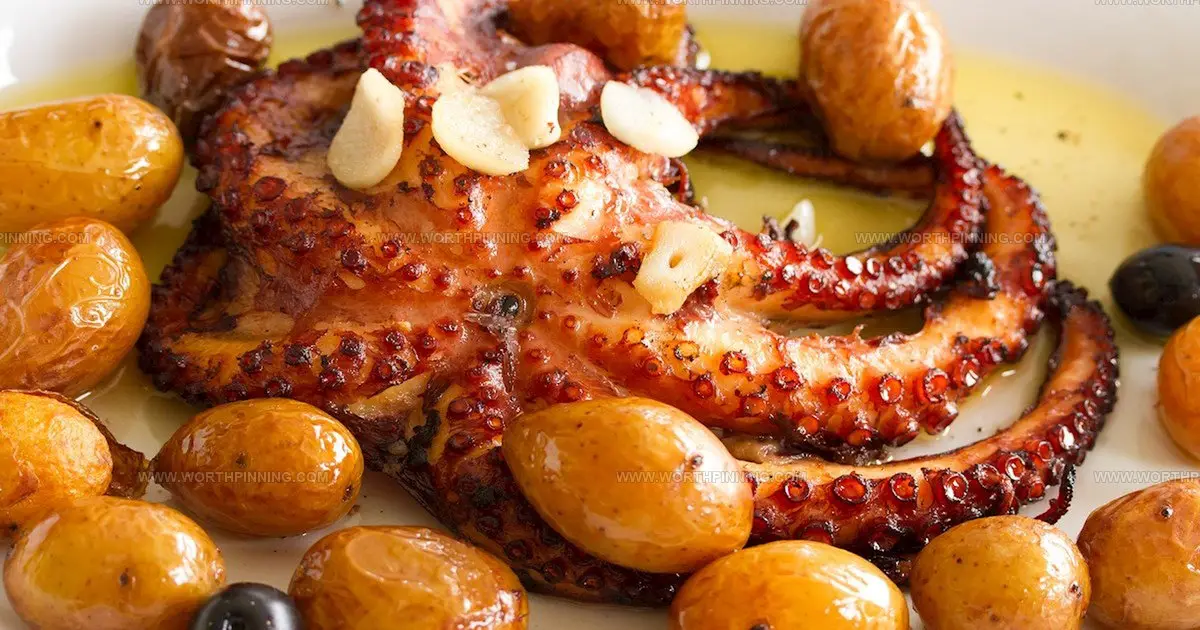
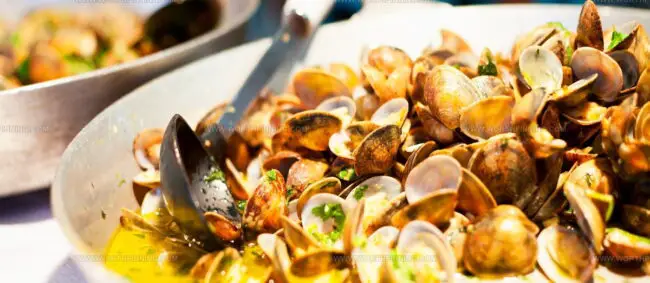
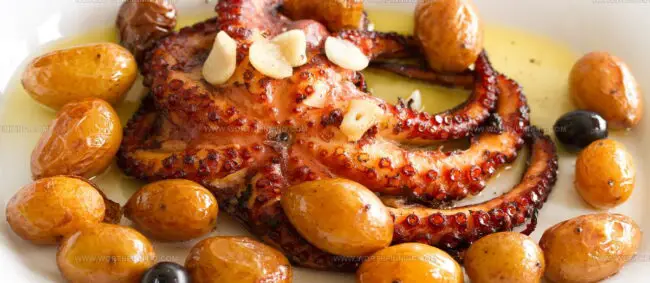
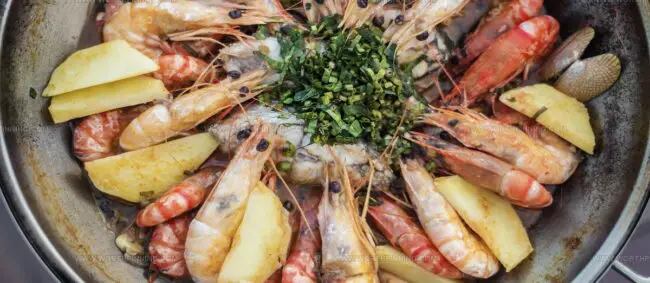
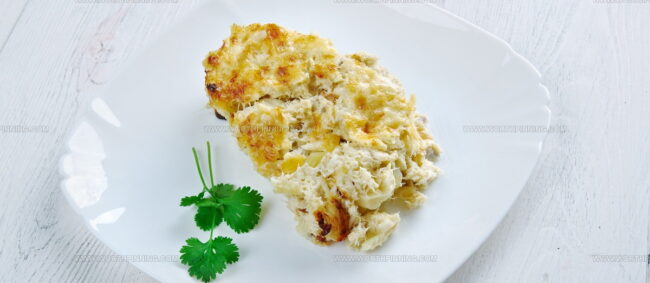
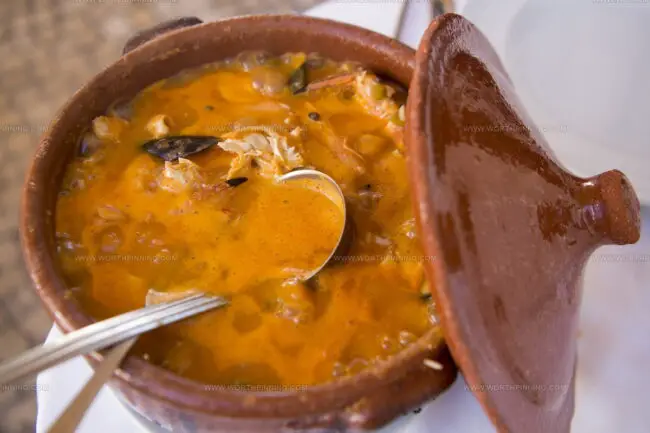
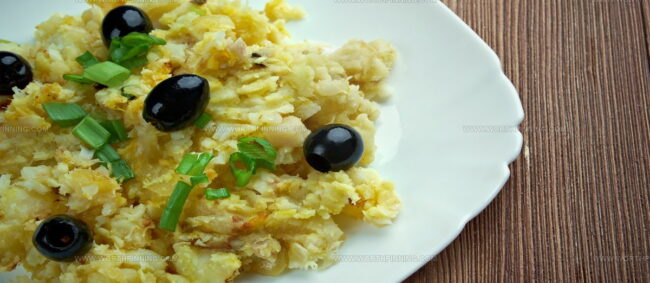

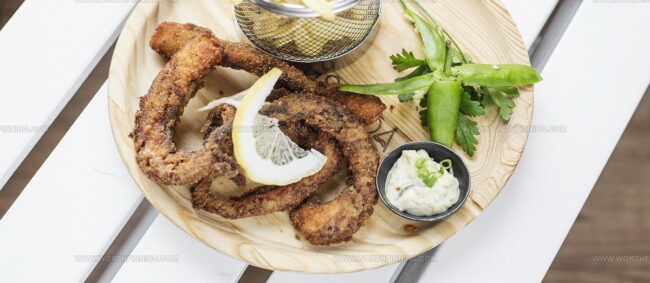
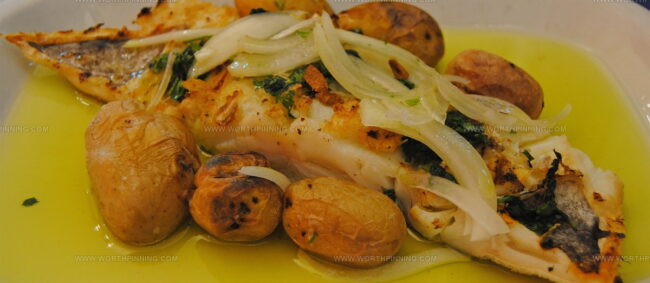
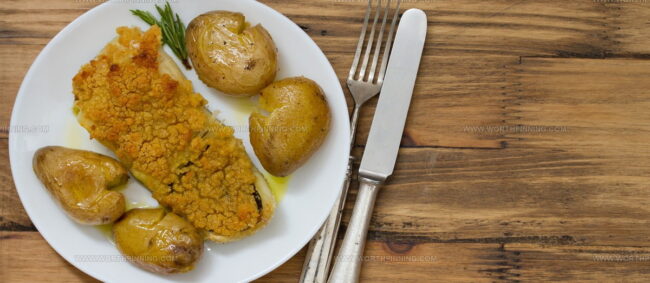

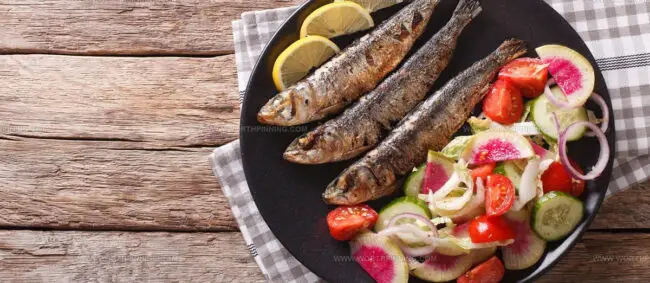
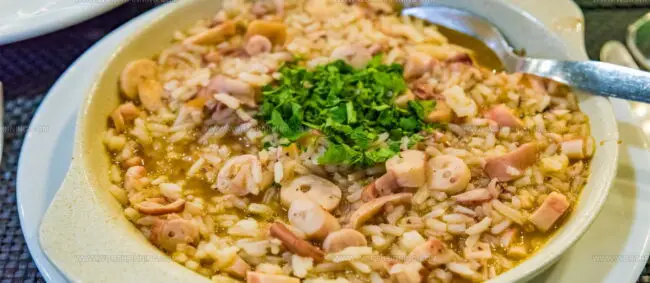
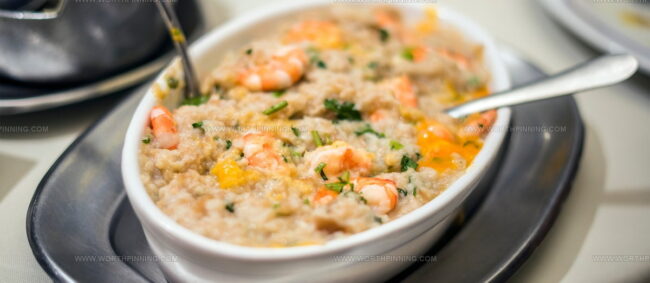
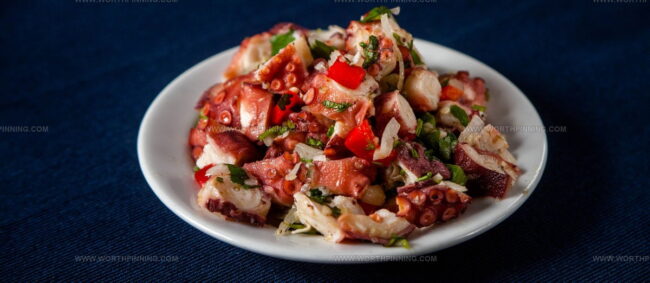
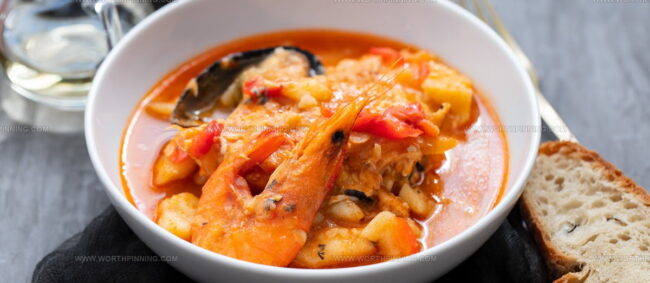

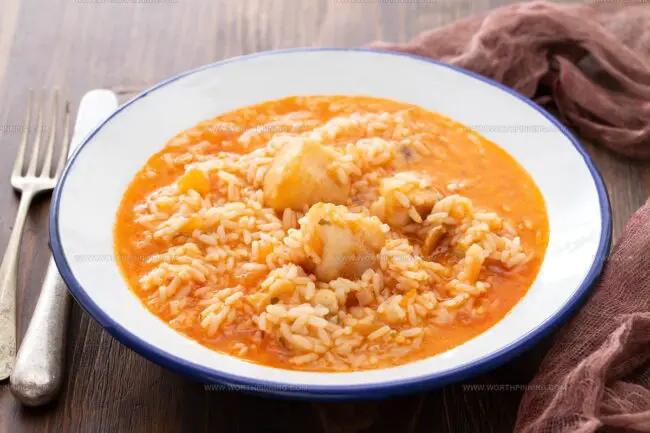
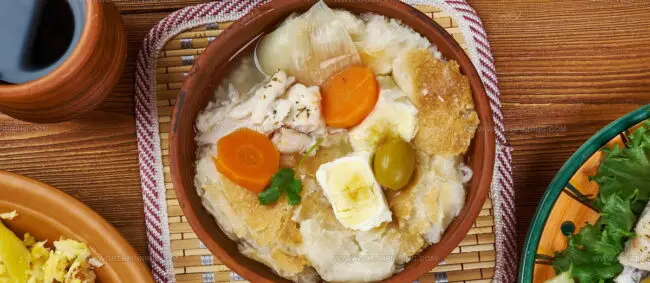
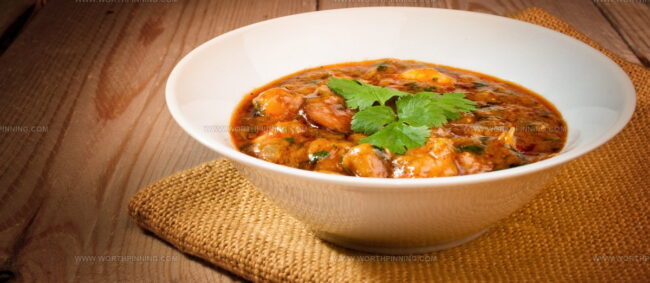
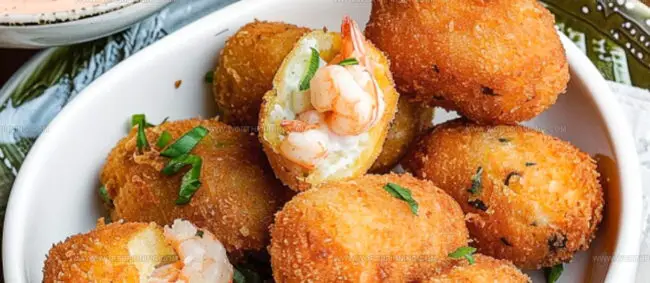
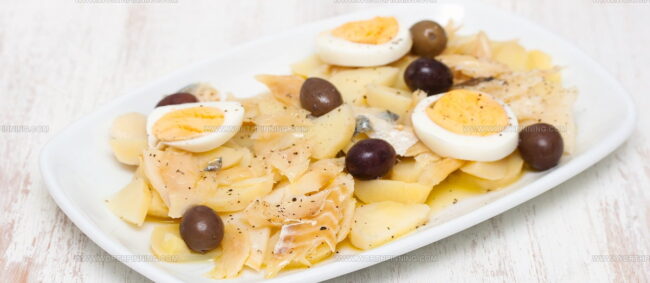
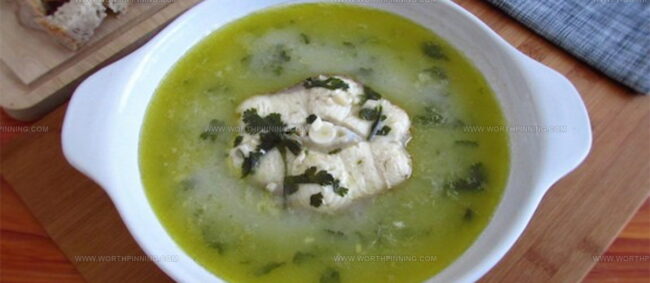
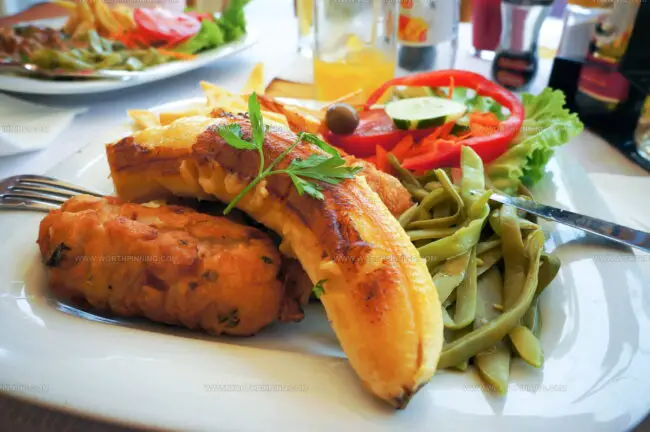
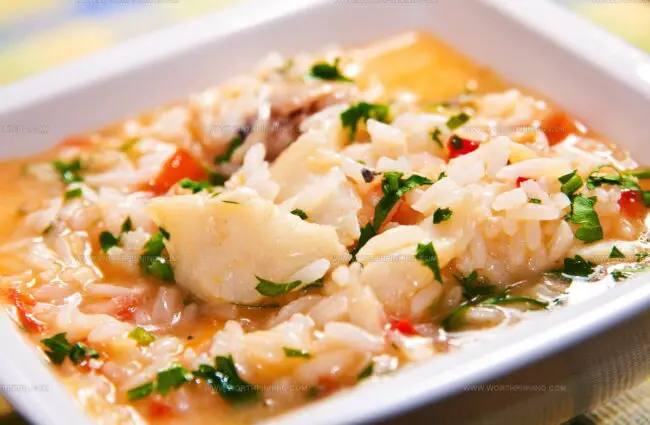

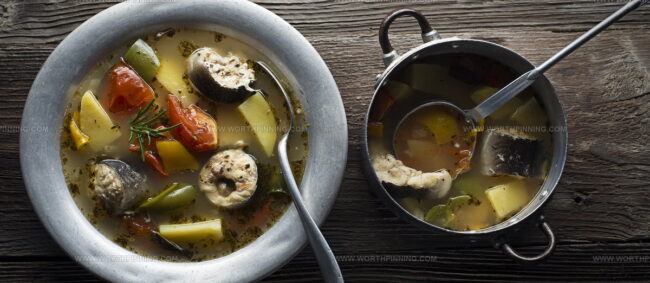
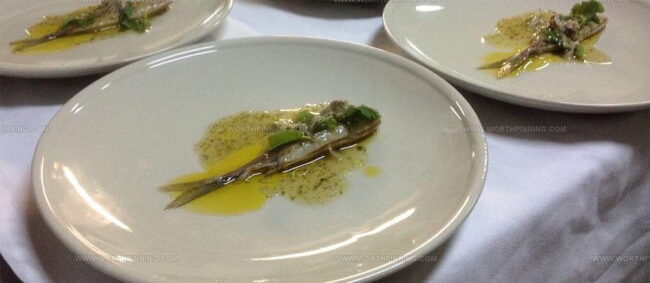
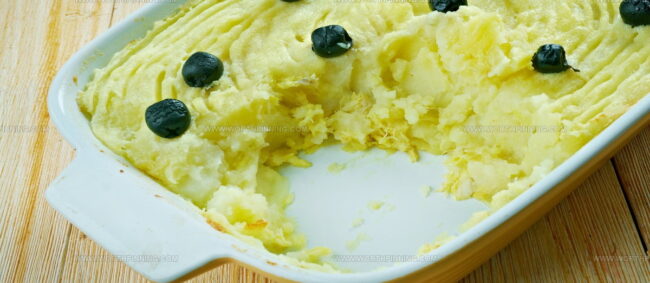
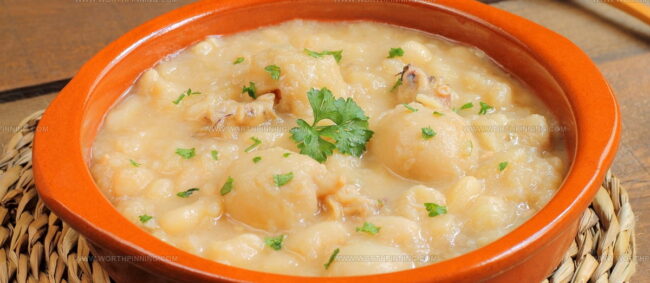
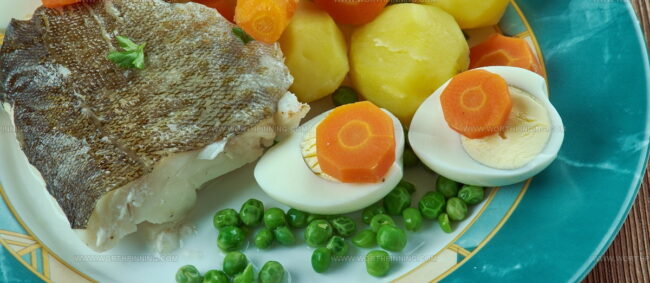
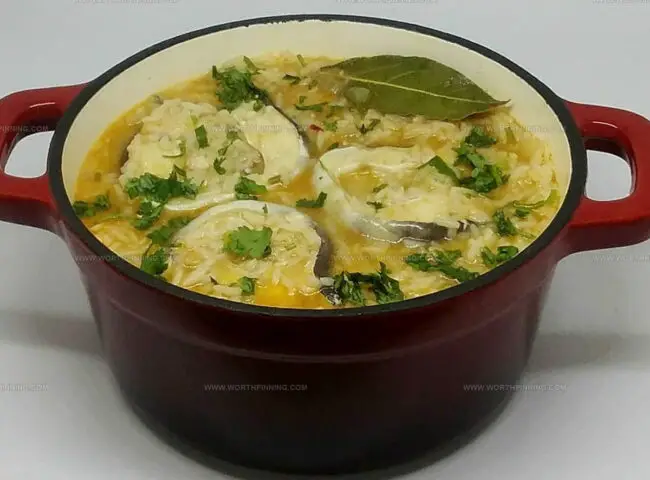
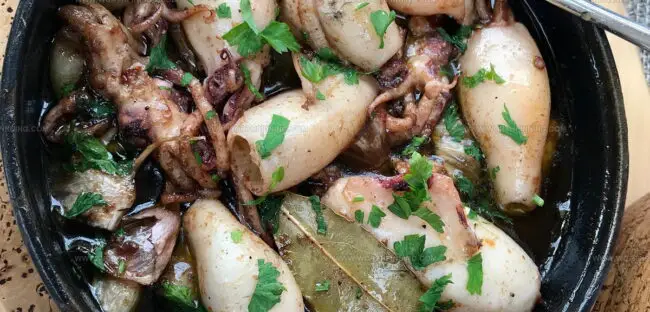
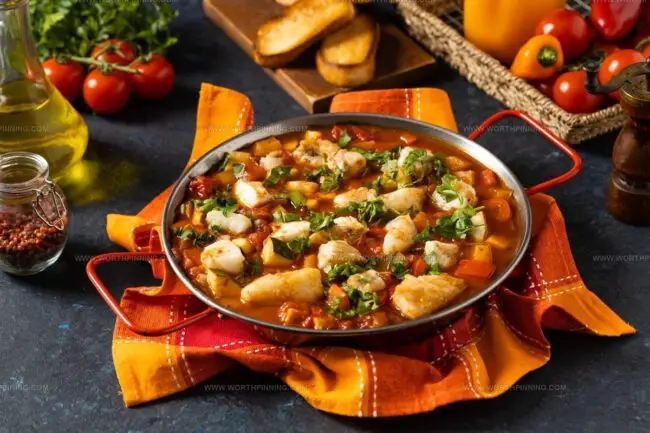
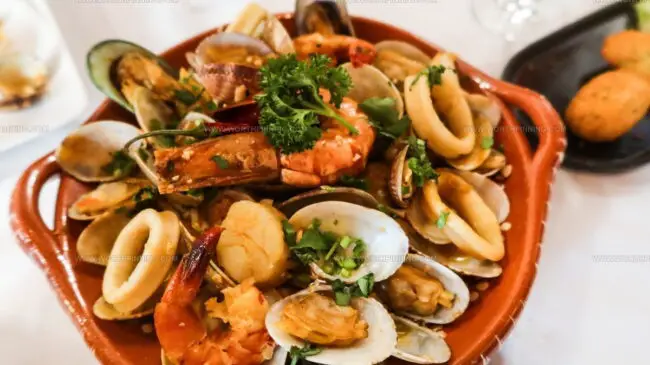
Ethan Miller
Founder & Lead Content Writer
Expertise
Education
Portland Community College
Culinary Institute of the Pacific
Ethan’s culinary journey began in his grandmother’s kitchen, where he first learned to play with flavors and ingredients. With formal training in culinary arts and a deep love for international cuisines, Ethan’s goal is to share the joy of cooking with others.
He believes food is all about creativity and bringing people together, one meal at a time. When he’s not experimenting with new dishes, he enjoys hiking in the Oregon wilderness and discovering fresh, local ingredients.